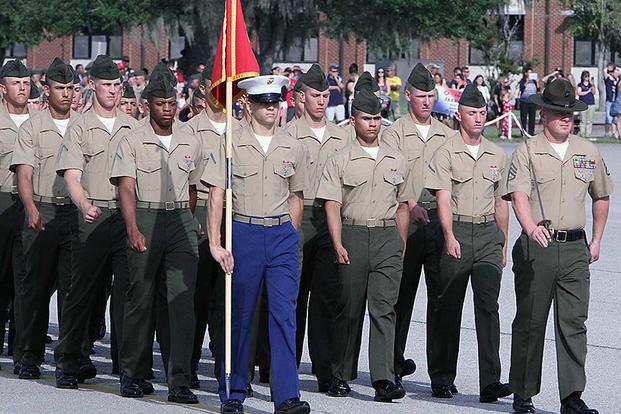Five years after a Muslim-American recruit died by suicide days after beginning Marine Corps boot camp, prompting the discovery of multiple hazing scandals, the Pentagon still doesn't accurately track abuse within the ranks, a government watchdog found in a report released Wednesday.
The report said that the military may be understating hazing incidents across all branches by tens of thousands in its yearly reports to Congress. It’s the third report on hazing produced by the Government Accountability Office in the past ten years, and the authors noted of the four major recommendations to stem hazing incidents recommended in the past, the Pentagon has only implemented two.
Attention on the issue grew after Raheel Siddiqui, a Pakistani-American Muslim recruit from Michigan, reportedly leapt from the third floor of a barracks building in 2016. Gunnery Sgt. Joseph Felix was the senior drill instructor responsible for training the 20-year-old. An investigation found a history of intimidation and hazing in the unit. In one incident, Felix woke up a recruit, Ameer Bourmeche, and forced him into a clothing dryer, calling him a terrorist. He let him out of the dryer at intervals in a mock interrogation, asking whether he was still Muslim.
Felix was sentenced to 10 years in prison, and multiple other drill instructors were relieved of duty after a string of hazing incidents was uncovered. It was one of the military's highest-profile scandals in recent years and caught widespread national media attention.
Read Next: 2 Battalion Commanders Fired for Refusing COVID-19 Vaccine, But 96% of Active Army Meet Deadline
A Military.com investigation in February found that 90% of hazing complaints originate in the Marine Corps. But the Corps probably isn't the only service in which mostly younger troops are victimized through disciplinary action gone awry, abusive rituals to initiate new service members, or abuse masquerading as physical training. That's because there simply isn't any data on how prevalent hazing is, a report from the Government Accountability Office found.
The Defense Department reported 183 to 299 hazing complaints a year from 2017 to 2020. But the data is incomplete, according to the GAO. Reports gathered by the services and submitted to Congress each year miss critical details. For example, the Navy did not report the ethnicity of alleged assailants, possibly overlooking potential hate crimes in the force. The Navy also didn’t include hazing as an option on a form given to sailors filing complaints, something the authors said might reduce reporting.
The services could be overlooking "incidents by tens of thousands," the GAO says, mostly because they don't catalog informal reports, which usually refers to complaints that may not lead to a full investigation. In addition the GAO notes that the DoD does not clearly define hazing or the differences between formal and informal complaints, and has yet to set up a clear process
for the services to collect reports on hazing.
That uncertainty about incidents is apt to get worse. The requirement that the Pentagon report hazing incidents to congress lapsed in January, relieving the pressure to produce numbers for lawmakers to review.
"Prevalence is important because decision makers can use it as a starting point to determine if efforts to prevent and respond to hazing are effective," the GAO's report notes.
A great deal of the missing data should be coming from the National Guard, which the GAO says does not report hazing that occurs when soldiers and airmen are on state orders, when they are under the control of governors and where they spend the bulk of their duty time. Guardsmen typically are on federal orders only when deployed abroad. The report lays the blame on Gen. Daniel Hokanson, the chief of the service component, for failing to properly set hazing policies.
"The Chief, National Guard Bureau, has not established a policy that addresses how
it should receive, track, and report on these complaints," the GAO's report says.
-- Steve Beynon can be reached at Steve.Beynon@military.com. Follow him on Twitter @StevenBeynon.
Related: Nearly 90% of Military Hazing Complaints Come from the Marine Corps, Data Shows













